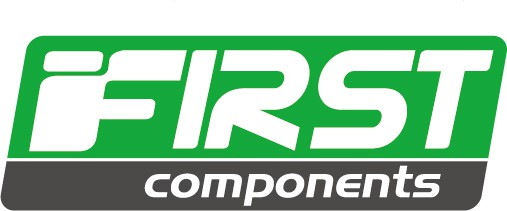As a follow up to last month’s mid year appraisal of e-bike tech, this month we’ll look at some of the more innovative and sophisticated products on show at Eurobike 2024, providing a snapshot of where we are as the industry recovery shows signs of picking up the pace.
You might want to review the Eurobike Show Daily’s appraisal of this year’s show for an overall view of where the industry stands mid 2024.
Contents
Motors
ZF – Compact, Powerful, Seamless
ZF Micromobility forms part of a substantial global technology company, ZF, which specializes in supplying advanced mobility products to the automotive industry. ZF has electrified a wide range of vehicle types, one of which is e-bikes.
ZF’s flagship product is the ZF Bike Eco System, an e-bike drive aimed to outfit models from MTB to trekking to city bikes. It consists of a motor, battery, and control/operation unit and can be customized to fit a production of bikes through the software. Two versions are available: CentriX 90 with an assistance torque of 90 Nm and a maximum output of 600 watts and CentriX 75 with an assistance torque of 75 Nm and a maximum output of 450 watts.

The (motor) drive is designed for invisibility on the bike and is one of the lighter on the market at 2.5 kg. The Flyon drive was a pioneer in this rounded, integrated design and has since been joined by Delta, another electronics company that recently created a division to capitalize on the popularity of e-bikes. Delta’s version? Unsubtle . . . to be generous. ZF have delivered a unit in the spirit of the original svelt Flyon. Keep an eye on them.
Darfon and Astro
Darfon, an Acer subsidiary, continues to pump out more efficient, more powerful units: 4 new models (E2C0F, E3C0F, EC03D, E4C0Q) and a range extender (1.1kg E1C05 200 Wh) at this year’s Eurobike.
Together with Astro (in which Darfon has a 51% share) they created the double-battery system. Noting consumer usage patterns, Astro targeted the tendency of both trekking and city cyclists to travel an average of 30km per trip which does not require a single large 700-800 Wh 4kg battery. Splitting it into two 360 Wh units. Use just one for short trips where the space can be used for storage or both ie. 720 Wh when you need it.
Batteries
AVS Electronics & AVE Mobility
AVE Mobility, an affiliate of AVS electronics, was set up on 2014 to supply OEM and ODM HMI products for what we now know as the “e-Mobility industry”. AVS produces a variety of items compatible with a most open-drive systems, notably their Human Machine Interface (HMI) systems.
The AVS TT07, a top tube-mounted module, displays key data such as battery SoC and level of assist. The multi-function button enables on/off power control, assist mode control, as well as high/low light beam. HMI functions include BLE, firmware updates, and NFC for smartphone pairing and bike unlock.
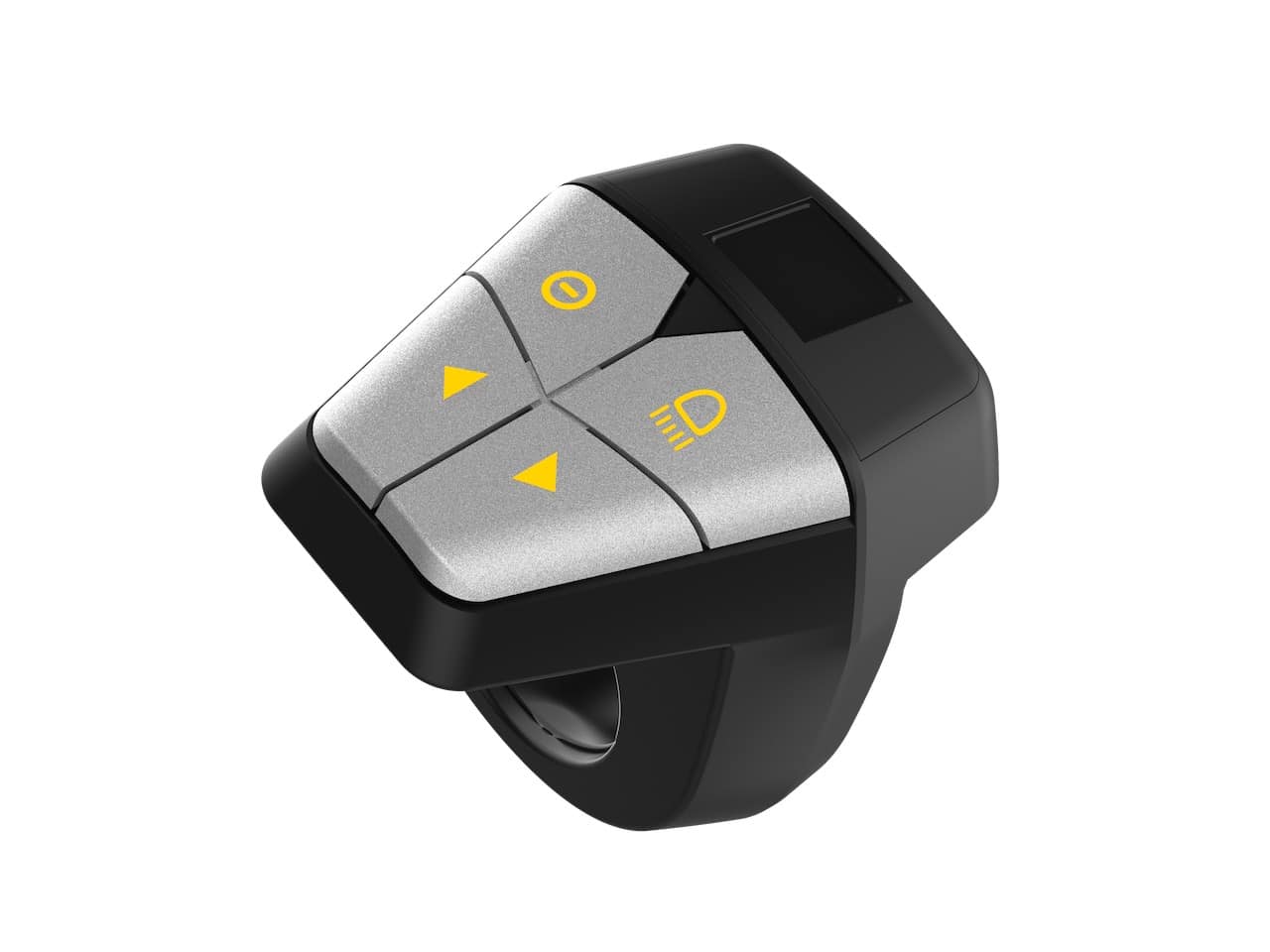
The AVS RC8-FS HMI goes a few steps further. It’s activated through a fingerprint sensor which allows only authorized unlocking and startup.
EMBS
Johnson Mathey Battery systems was recently renamed to EMBS, which was not the best branding move since the acronym is also claimed by the Engineering in Medicine and Biology Society, the European Master in Business Studies (where you learn about cunning ways to rebrand/rename your company) amongst others things.
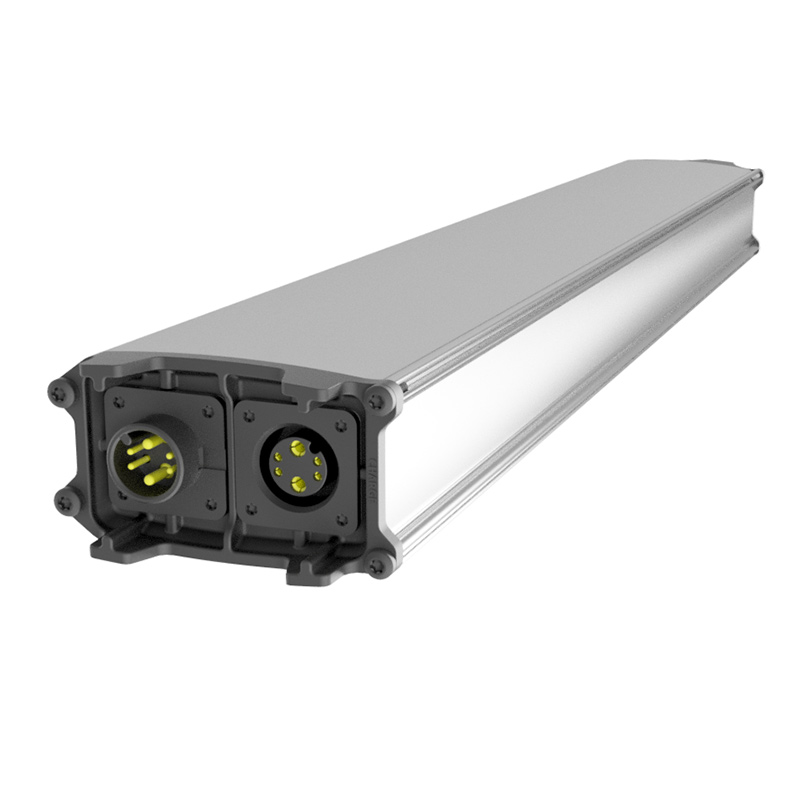
Nevertheless, the lithium-ion battery specialist based in Poland brings expertise in supplying batteries to the gamut of industrial verticals. The S-Tube 36V is a slim lightweight model with a handle and slide-in mechanism.
Sinbon
This Taiwan manufacturer producers motors, tracking and alert systems, as well as batteries. Their Helios battery can be customized to fit on any sized down tube or rear rack. Their latest HMI display uses a TFT screen.

But they are also into software development. Their app is powerfully multifunctional including real time system monitoring and diagnosis; recording of riding data that goes to the cloud for storage and analysis; blind spot detector—riders are notified of the approach of vehicles from the rear and are alerted when entering the proximity zone; anti-theft alert and tracking are also features.
Autorq
Providing advanced sensors, Autorq showcased the hubTORQ, their new hub motor torque sensor which integrates directly into the motor, not the bottom bracket. This allows greater latitude in motor design, particular the integration of a gearbox into the BB area.
Autoshifting
A strengthening trend is the integration of gearboxes into motors and continued improvement of auto shifting.
The OG in this has got to be Enviolo who presented as Nuvinci for year after year in what was totally a niche of their own. They were certainly way ahead of their time. With the Automatiq, riders determine the range of gear selection by cadence. Other systems employ discrete gears whereas the Automatiq is a continuously variable transmission that traverses a range of gear ratios which the company continues to refine over time.
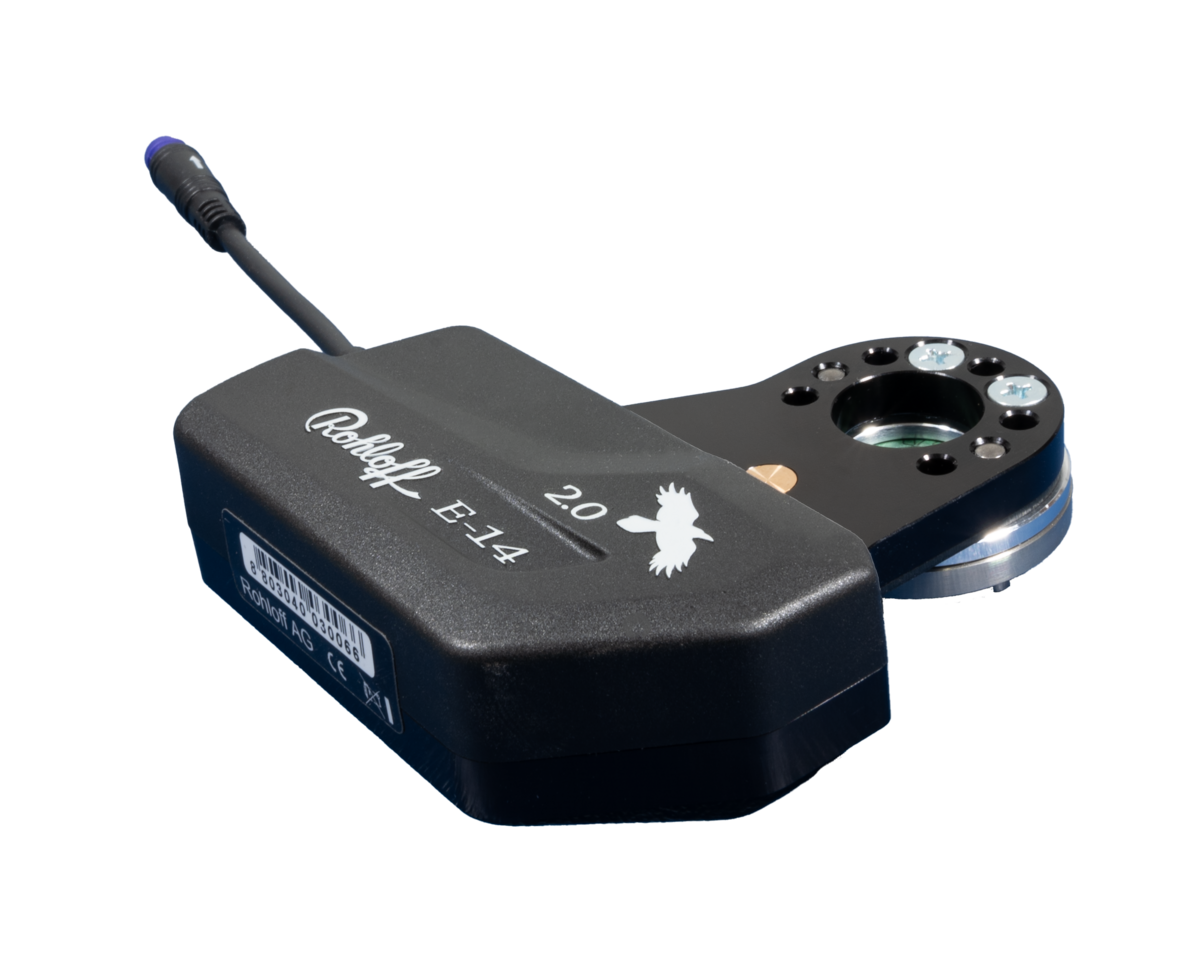
Rohloff is aiming at the smart future in relation to auto shifting. The E-14 2.0 is now compatible with Bosch’s Smart System—drivetrain and shifting systems can talk to each other to synchronize gear changing.
Rohloff claims that the E-14 is the most efficient and reliable shifting system available for electric bikes with mid-mounted motors. Designed to complement the SPEEDHUB 500/14, a single button press automatically reduces motor power on the drivetrain then initiates a shift. Holding the button triggers the E-14 system to sequentially shift gears in groups of three, allowing you to cycle through all 14 speeds if needed. When the system detects you’ve stopped, the E-14 automatically shifts to a predetermined gear for easy restarts.
Pinion launched advanced functionality for their MGUs in the form of a new automatic mode which includes presets—Auto.Shift for standard riding and Auto.Shift.Pro for high performance riding. The upgrade will be delivered to all Pinion MGUs as a software upgrade.

Korean manufacturer, Contavelo, introduced the Pedal Motion Crank which seems to hark back to the era of 2-speed kick back hubs. They are calling this a Circular Transmission System. An old technology adapted to e-bikes?
Niche-specific E-bike Drives
The e-bike drive space has become crowded and increasingly contested. Just as e-bikes have become much more heterogenous in a short space of time, the same is happening with motors, particularly the bigger more powerful—and thus heavier—units.
Bafang’s launch of its Gear Variable Transmission (GVT), notably in the form of it’s recently released G500A, a 5-speed automatic hub designed to enable high-powered fat tire bikes easily deal with difficult terrain such as snow or sand.
Truckrun’s M12 mid-drive’s max torque of 120 @ 500 W and 160 Nm @ 750 W is suited to heavy duty applications—perfect for big cargo bikes and trikes. It has been designed to fit a range of common mounts and so removes the need for a costly frame redesign to accommodate it.

The Decathlon/E2 Drives partnership delivered the LD 920 E CVT automatic e-bike. The OWURU motor seamlessly integrates its power with a cyclist’s pedaling cadence. This eliminates the sensation of a disconnected drivetrain, despite the motor utilizing a separate sprocket rather than a direct chainring connection.
This makes for a good segway into a look at the technologically sophisticated recent batch of City Bikes.
E-City Bikes: A Mature Category?
E-cargo bikes have the potential to replace at least one of the family cars in sprawling urban environments. But the potentiality is yet to be realized—it’s a trend gathering momentum.
City bikes on the other hand, have developed to the point of ubiquity in (the more bike-friendly) cities around the world. Faced with a choice of a step through, fat tire quasi-cargo bike or a city bike, consumers are increasingly opting for the latter. And brands have responded to support that enthusiasm. The recent batch arguably aim to go beyond pure city functionality and offer features that allow a more comfortable off-road experience should their owners look to roam beyond city streets. But the overall impression of well-made, sophisticated machines that would fit right in at even the most exclusive tweed ride.
One element contributing to this rise of the city bike is the demise of derailleurs and the growing adoption of internally geared automatic motors, particularly the Pinion GMU which has seen rapid uptake since its relatively recent introduction.

Hepha’s Urban 7 take city bikes in an interesting developmental direction in its adoption of a dropper stem that functions similarly to a dropper post. Hepha describe the Urban 7 as “dynamic” and “sporty”—you can easily make the argument that it’s neither, and not particularly attractive for that matter. (The defunct Gogoro Eeyo was a looker, had some very advanced tech, but ultimately caught nobody’s imagination). The Urban 7 is, however, clearly an urban workhorse designed for city street commuting and light cargo duties (rear rack and/or front box) without a thought of going off the pave and into any sort of adventure mode. Just under 20kg, a 480 Wh battery, and 80 Nm of torque is all the spec anyone needs for functional city cycling.
The twin suspension of the Simpel Model 20 Six pushes the boundary of what is appealing about a city bike. It’s heavy at 150kg too, hinting at adventure usage for the weekend. The Enviolo hub, Shimano EP801 motor, and Supernova lighting system make it an integrated and sophisticated unit.

Flyer’s Goroc TR goes a step further to clearly straddle the city/adventure category to the point of approaching an eMTB. City bike purists won’t like this; those looking to go off-road will. The Pinion MGU means a cyclist won’t need to put any thought into gear selection whether on urban pave or the back blocks.
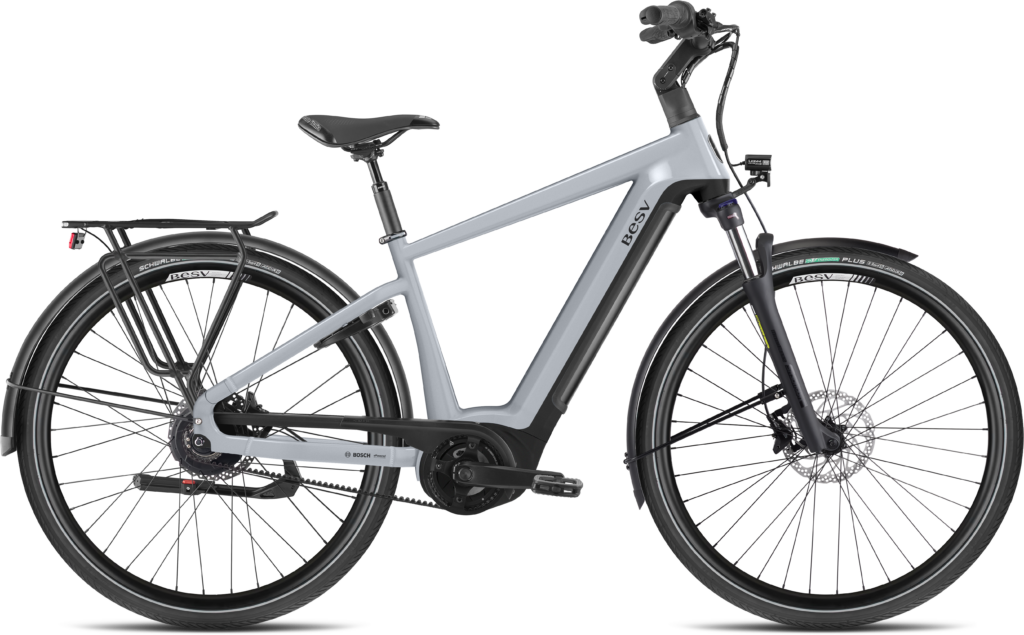
BESV have seemingly been around for ever and have always been distinctive by naming their models using a password generator and setting it to “username” letters and numbers. Nevertheless, the “CT-B 1.1” is stylish and elegant, a refined beauty when placed beside the models reviewed above. A 250 W Bosch motor with 75 Nm of torque and 625 Wh battery to minimize charges/changes, hits the sweet spot.
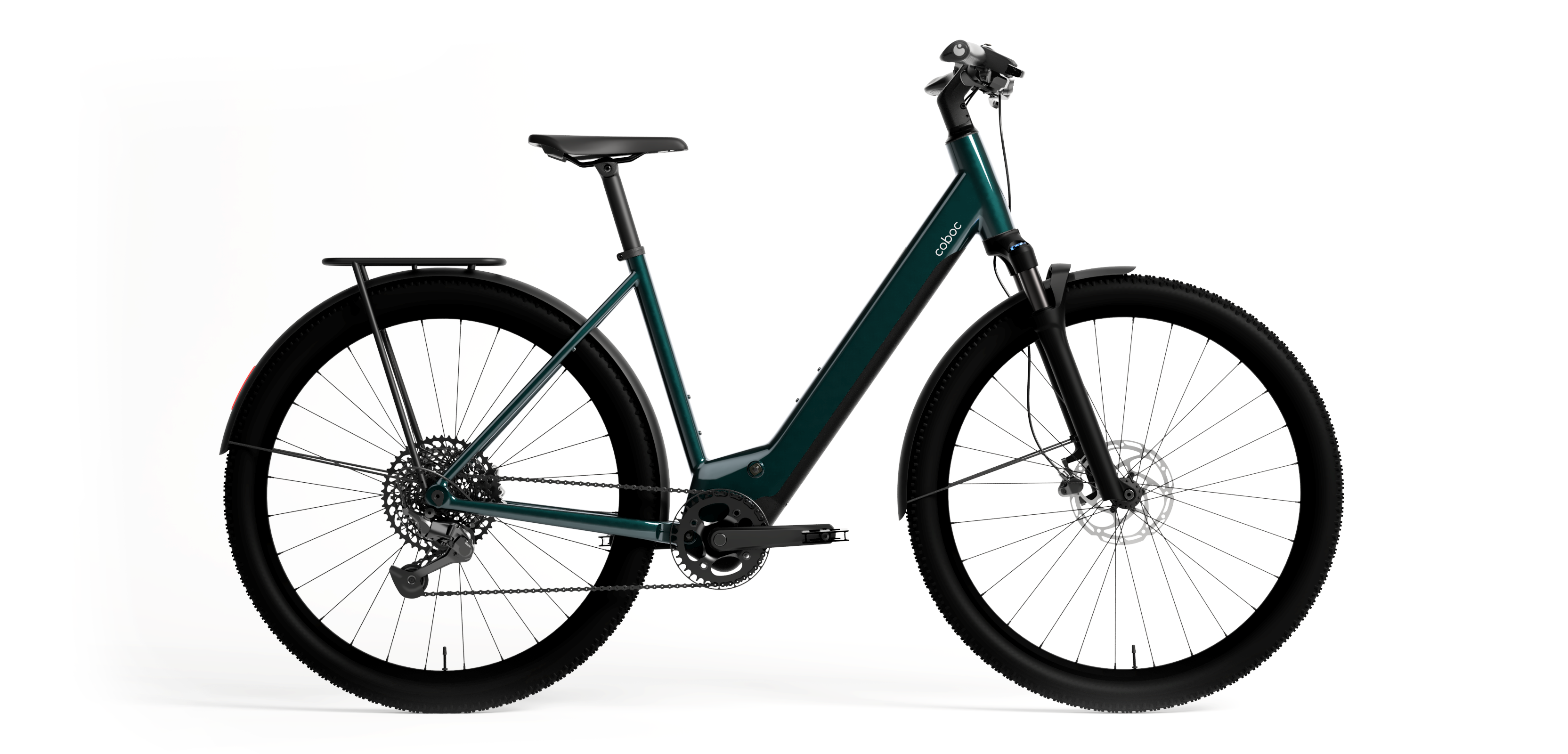
The Coboc Skye continues in this vein as does Tezeus Technology’s C8—light and sleek.

The C8’s carbon frame means it weighs in at a mere15kg. It sports a 60 Nm torque motor, integrated display, and radar to warn of approaching traffic. But lightweight is the winner here.

Established in 2022, Nordic Bikes who craft premium bikes as a foil to the “usually heavy, very ugly and too technlogical” e-bikes they see as dominating the market, presented the Series 01 weighing in at 13.5 kg. Powered by Mahle’s X20 (lightweight, 55Nm torque) with 150km range, this sleek machine reinvigorates the concept of copenhagenize.
